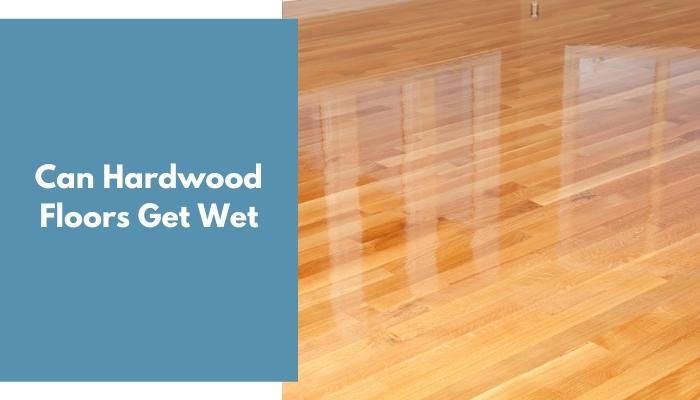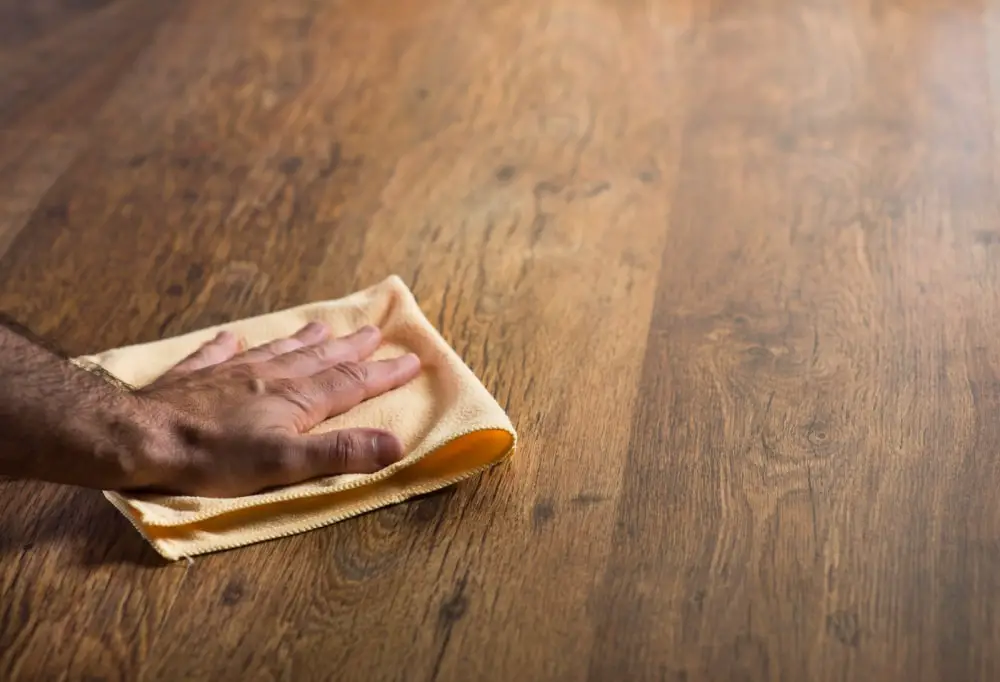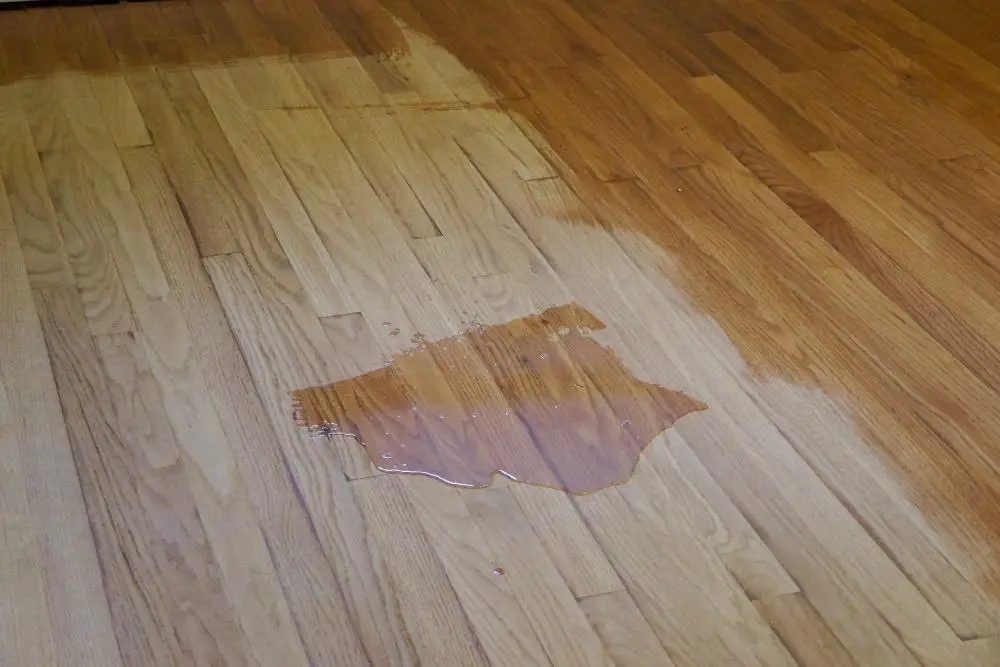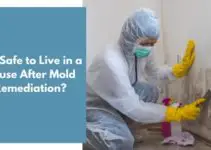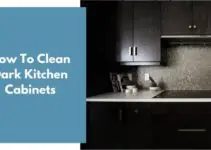Hardwood flooring is prone to staining due to the material’s porous nature. This issue comes from minor spills and large amounts of water accumulated on the floor.
Hardwood floors can get wet. But, they can only endure various types of damage, such as water spills. Before you decide to install these floors, it’s essential to research the different wood flooring types available thoroughly.
This article will enlist information on what kind of hardwood floors you can install in your house and how to minimize water damage. If you do have water stains on your wood, we recommend this hardwood floor restorer.
- Fills In Scratches And Restores Shine To Wood Floors And All Flooring Types
Prices pulled from the Amazon Product Advertising API on:
Product prices and availability are accurate as of the date/time indicated and are subject to change. Any price and availability information displayed on [relevant Amazon Site(s), as applicable] at the time of purchase will apply to the purchase of this product.
Contents
Are Hardwood Floors Waterproof?
This kind of flooring is not waterproof. Hardwood floors are typically more practical and beautiful than other flooring materials.
They are also incredibly durable and are restorable to their former glory. In some cases, a carpet can hide some of the most refined hardwood floorings in a home.
Despite the lack of protection against water, many people still ask if hardwood is waterproof. It is an understandable concern, but it does not mean that hardwood isn’t good for you. Before you install hardwood, research the various types of wood flooring thoroughly.
How to Minimize Damage on Hardwood Floors?
Getting rid of wet wood floors quickly is essential to prevent them from becoming permanent damage. Below are some efforts that you can make to get rid of them.
Remove Objects From the Floor
When furniture and rugs are moist, they will continue to shed their moisture, eventually affecting the wood’s surface. They can also render mold and mildew development.
Place Mops and Towels All Over
Use towels, cleaning rags, and a wet vacuum to remove small puddles and spills from the floor. However, don’t stop using the damp vacuum even after completely removing the water from the wood surface.
Clean the Floors Thoroughly
After siphoning off the water, it’s natural to add a liquid to the floor to clean it. However, this method can leave behind debris and dirt that can collect and store water. To keep the floor clean, use a disinfectant and scrub brush.
After thoroughly cleaning the area, use a wet vacuum to remove the debris and dirt from the wood floor. Then, use a wood floor cleaner to remove the remaining disinfectant.
Dry the Hardwood Floors
While the wood flooring may look dry, water could have penetrated the entire surface of the wood plank due to its composition. To prevent this, use a dehumidifier to dry the wood floors for at least 24 hours thoroughly.
Before you start using fans, make sure that the entire surface of the room receives the blowing air. If the floor is below the level of the fans, then place them on the lower level to dry the floor. You can also open the window to allow more air to flow through the room.
Check if There Are Molds
Health problems can result from exposure to mold, which can cause allergic reactions and breathing issues. People should avoid inhaling or coming in contact with the spores to prevent getting sick. If the floor looks dry, check for signs of mold.
If you see signs of mold in the wood, such as the cracks and the buildup of moisture, you will need to remove the mold by scrubbing the floor with baking soda and water.
Run a Moisture Test
If there is still moisture in the wood, you can use a moisture testing meter to check for it. However, it can take weeks for the flooring to completely dry.
One of the most important things to keep in mind when maintaining and cleaning your wood flooring is never to wait for it to dry naturally. Doing this will not only prolong its lifespan but will also prevent it from getting damaged.
Prices pulled from the Amazon Product Advertising API on:
Product prices and availability are accurate as of the date/time indicated and are subject to change. Any price and availability information displayed on [relevant Amazon Site(s), as applicable] at the time of purchase will apply to the purchase of this product.
How Much Moisture Will Damage Hardwood Floors?
Generally, hardwood flooring has a moisture content of 6 to 12 percent. However, if it gets flooded, its moisture content can reach up to 40 percent, which means it has severe damage. Hardwood flooring can retain water, which can cause it to sit for a long time, leading to more damage.
It’s crucial to remember that even though you don’t need to panic, it’s still important to be diligent in cleaning up excess water and liquid on your hardwood flooring.
Using a water vacuum or a small amount of liquid, you can easily remove the excess water and help your hardwood dry faster.
However, even a tiny amount of water can still cause issues with your hardwood flooring. It’s essential to remember that even though it can clean itself, it will still require professional help to dry thoroughly.
Are Natural Hardwood Floorings Best for Houses?
Most practical hardwood species are oak, cherry, and maple. These are the most durable and resilient of hardwood types. If you have kids or dogs, choose harder wood. More expensive hardwoods such as Brazilian cherry and mahogany are also attractive but less durable.
Although these woods are not damage-proof, their finish can protect them from scratches and other minor injuries. You can refinish a floor to look new again when it gets damaged.
One of the most standard types of lumber used for furniture is solid hardwood. This type of wood comprises layers of solid lumber bound together using pressure and heat.
While engineered hardwood looks excellent, solid hardwood tends to shrink and expand more than it does. Both are great for homeowners, but they have their advantages.
Frequently Asked Questions
Is Hardwood Good With Water?
Hardwood floors have a weakness: water. It is not the type of water you would typically find in your kids’ play area or a cup.
It’s the small amount of water that you should immediately wipe down. Hardwood floors can’t handle the amount of water that can flood them from outside. If a pipe bursts or floods, you need to act immediately to prevent severe damage.
You can also call a professional to dry out your floor and prevent it from getting damaged permanently.
Not having hardwood floors dry can lead to mold growth and other health issues. Having them dried can also help prevent them from getting damaged.
How Do You Protect Hardwood Floors From Water Damage?
Despite the water issues that hardwood floors can face, they are not as delicate as they seem. To keep them looking their best, experts suggest keeping damp items off the floor and maintaining a comfortable humidity level.
If you have a lot of stagnant water, it can cause issues if left unattended for too long. To avoid this, always use products specifically designed for hardwood floors.
When your hardwood floors have visible wear and tear, consider buying distressed hardwood. This type of flooring will give them character and won’t require frequent cleaning. However, it can still cause water damage.
What Are Laminate Floors?
Instead of being made from solid wood, laminate flooring originates from a wood composite with a photo of natural wood. It makes it look like hardwood but is harder to damage.
Although the top surface of a laminate floor can get wet, the bottom and sides will swell after around four hours, and this can cause the floor to look uneven. To prevent this, remove the water from the floor as soon as possible.
If you plan on using hardwood or wood-like flooring, make sure that you know the risks associated with water damage. Also, hardwood floors are prone to buckling due to high humidity.
Conclusion
Hardwood floors are okay with water. But, they can only withstand water spills from cups. Floodings will destroy your flooring if not siphoned right away.
If you have a wood floor damaged by water, immediately remove it and prevent further damage. Doing so will prolong its lifespan and make it harder to get it back to its original condition.

